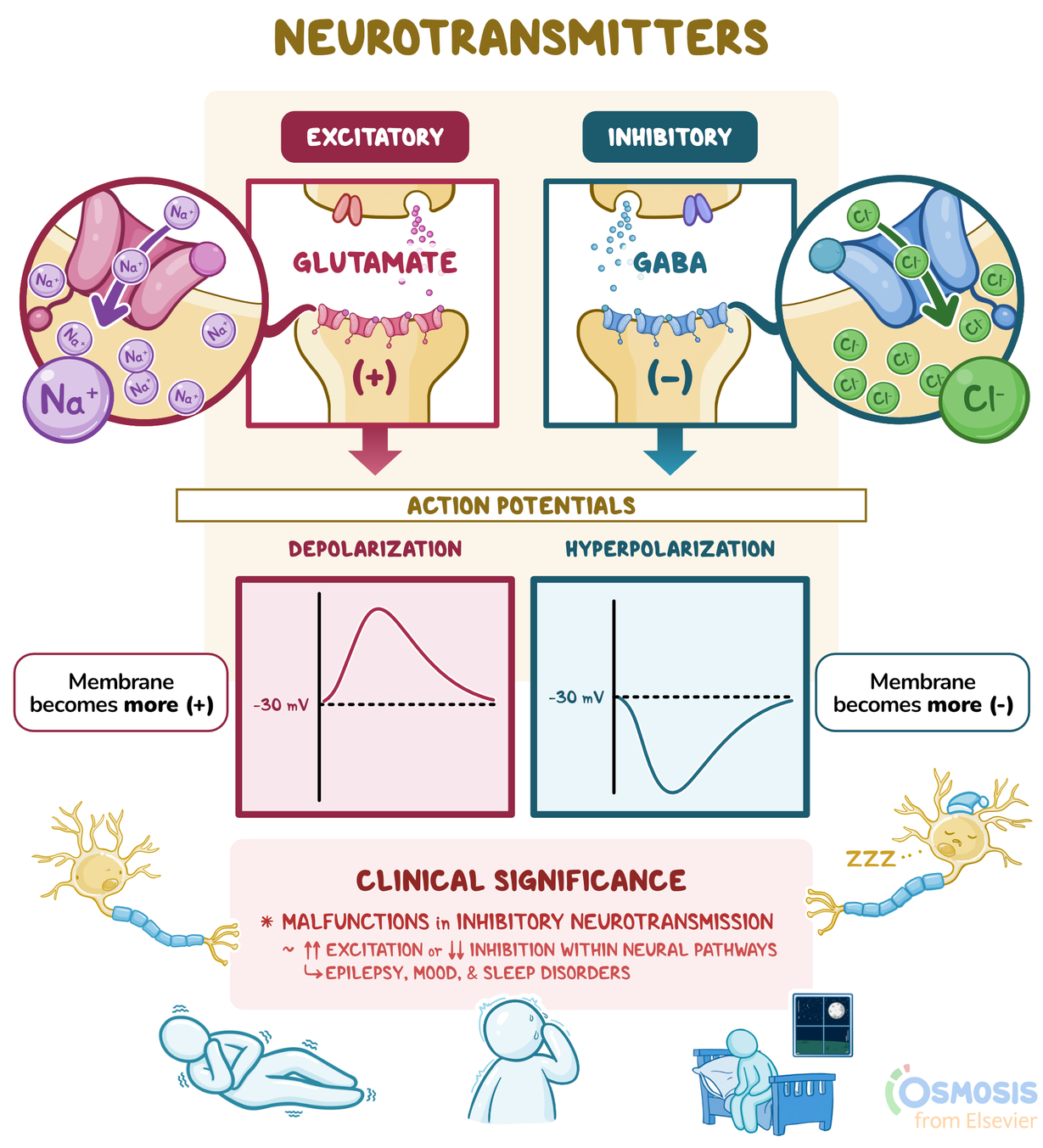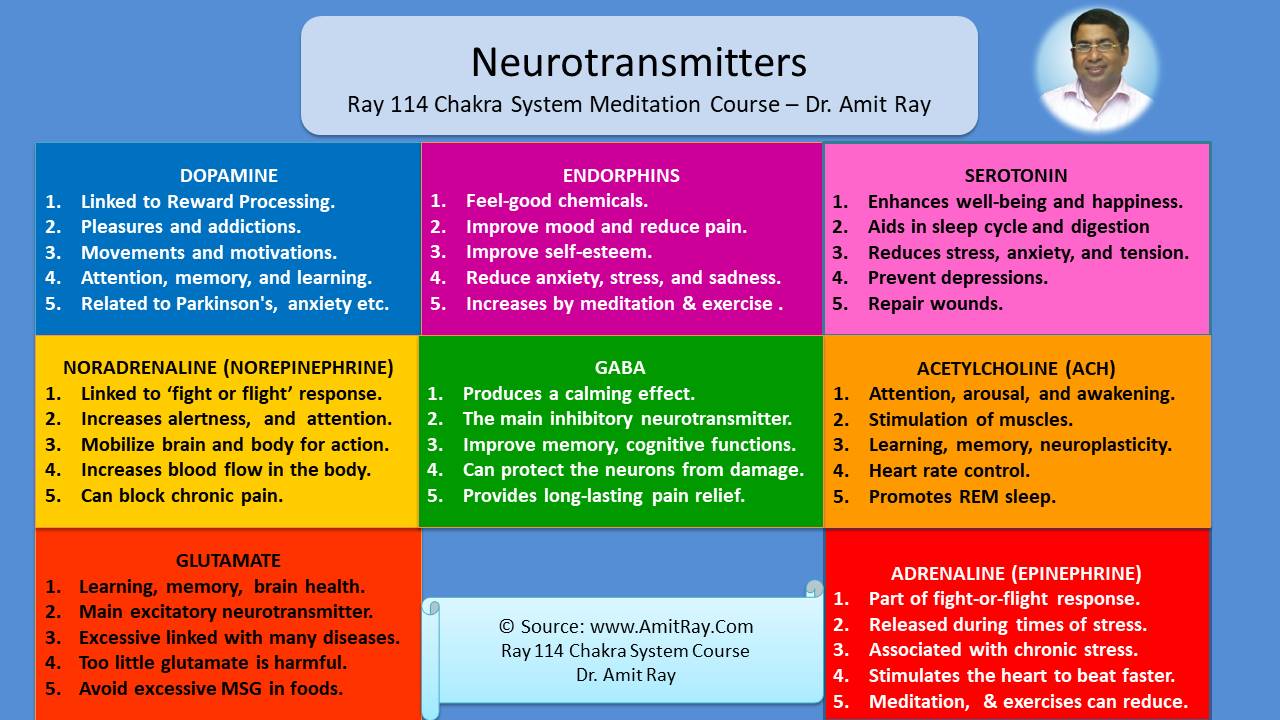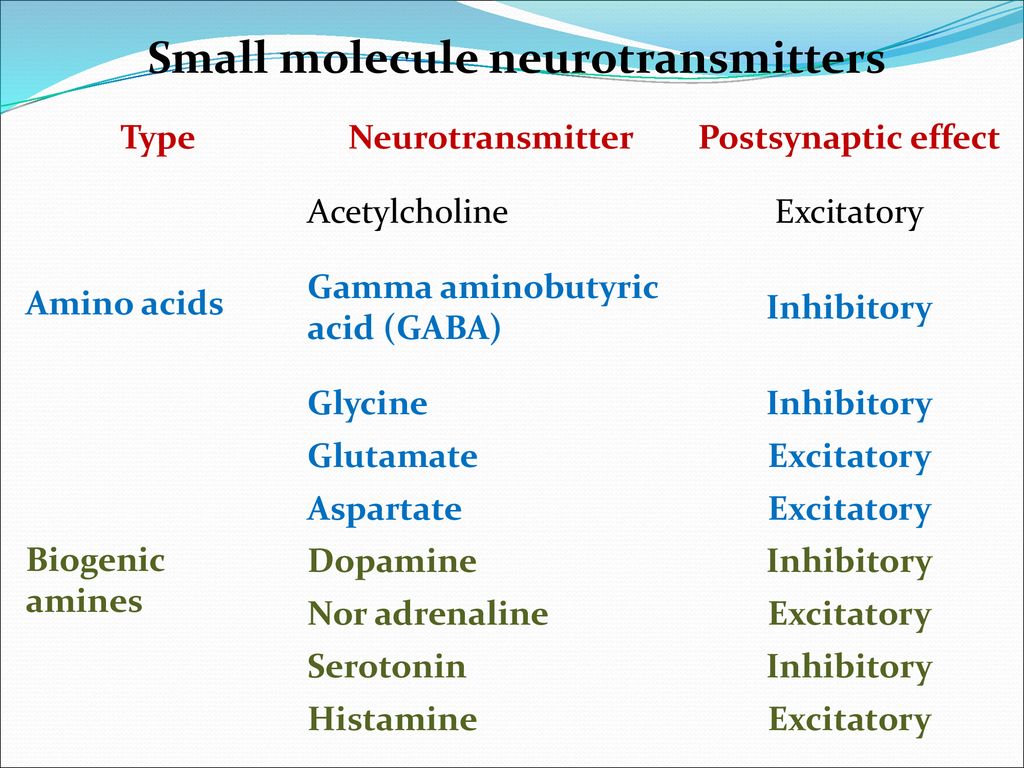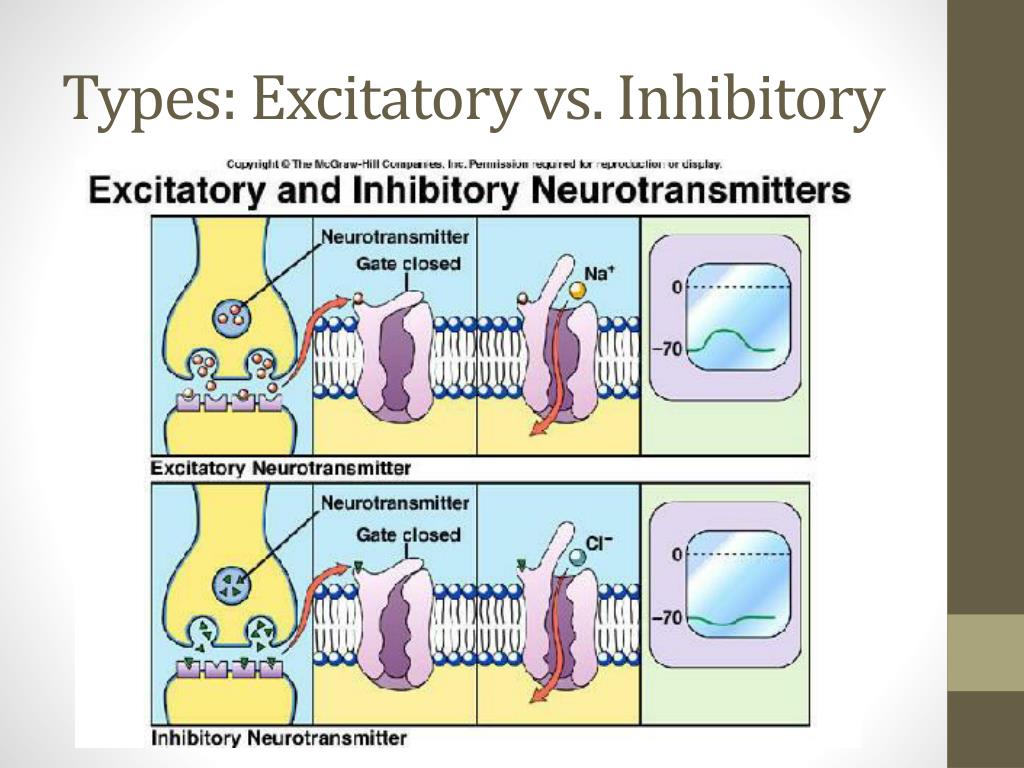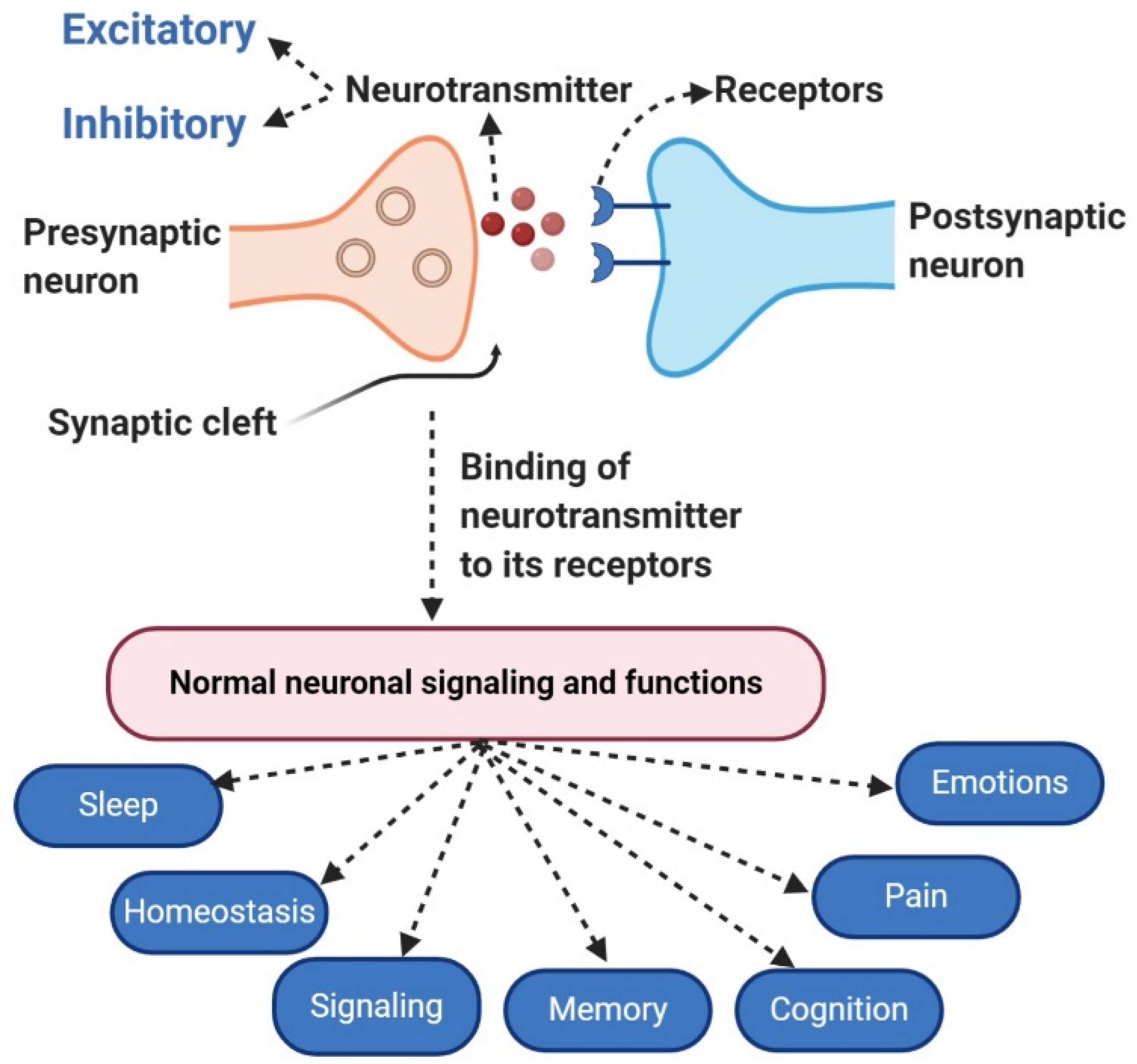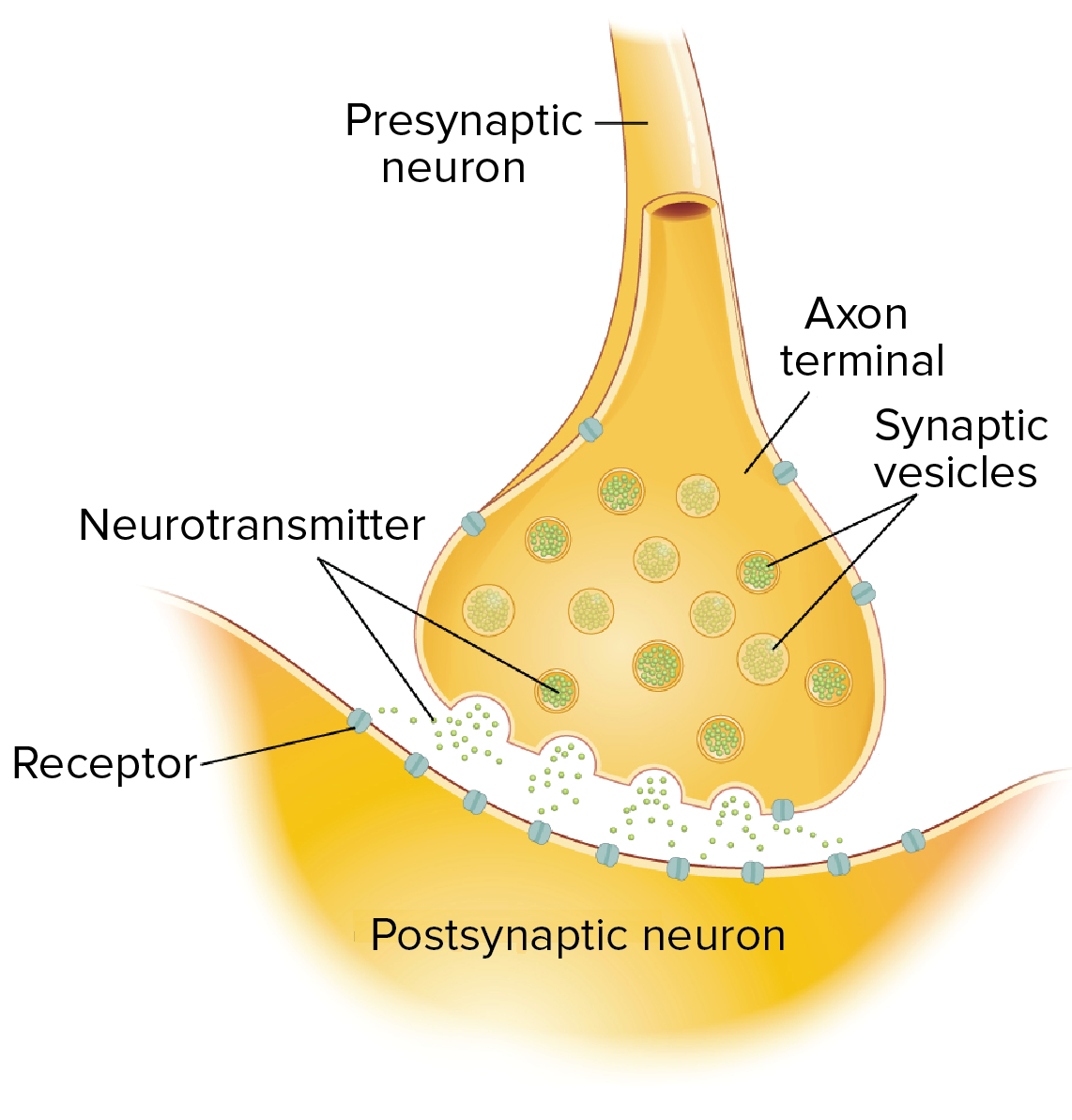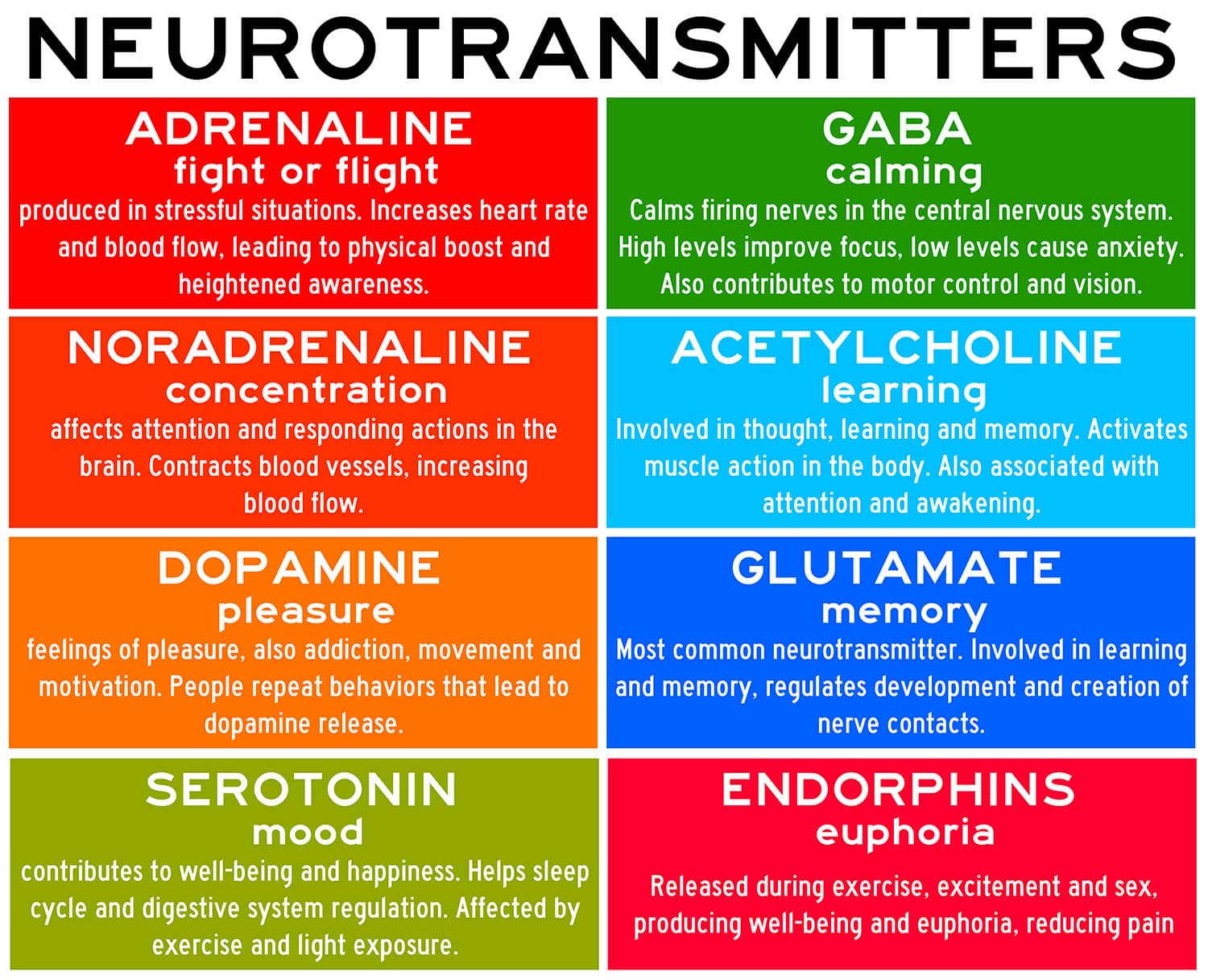Which Of The Following Is An Inhibitory Neurotransmitter
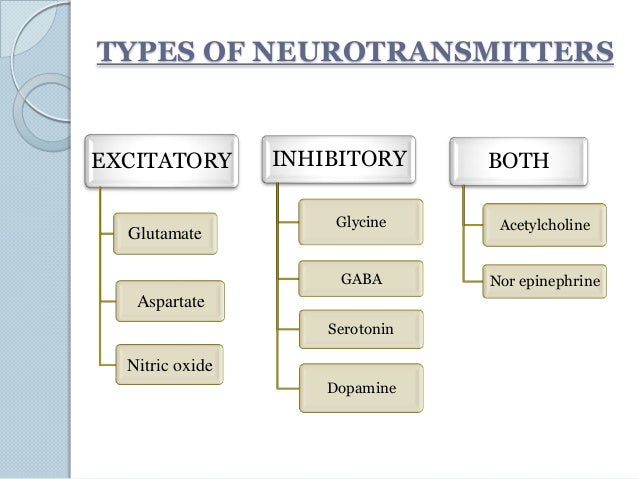
The human brain, a complex network of billions of neurons, orchestrates every thought, action, and emotion. The delicate balance of neuronal communication, reliant on chemical messengers called neurotransmitters, is paramount for maintaining optimal brain function. Disruptions to this balance can lead to a cascade of neurological and psychiatric disorders, making the identification and understanding of these neurotransmitters crucial for advancing therapeutic interventions.
At the heart of this intricate system lies the concept of inhibition – the ability of certain neurotransmitters to dampen neuronal activity, preventing overexcitation and maintaining stability. This article will delve into the world of inhibitory neurotransmitters, specifically addressing the question: Which of the following is an inhibitory neurotransmitter? We will explore the primary candidates, their mechanisms of action, and their significance in health and disease.
Understanding Neurotransmitters
Neurotransmitters are chemical substances that transmit signals across a synapse, the gap between two neurons. They can be broadly classified as either excitatory or inhibitory, depending on their effect on the postsynaptic neuron. Excitatory neurotransmitters increase the likelihood of the neuron firing an action potential, while inhibitory neurotransmitters decrease that likelihood.
This delicate interplay between excitation and inhibition is crucial for proper brain function. Imbalances in this system can contribute to a wide range of neurological and psychiatric conditions, including epilepsy, anxiety disorders, and schizophrenia.
Identifying Inhibitory Neurotransmitters: Key Candidates
Gamma-Aminobutyric Acid (GABA)
GABA is the primary inhibitory neurotransmitter in the central nervous system. It plays a critical role in regulating neuronal excitability throughout the brain. GABA exerts its inhibitory effects by binding to GABA receptors on neurons, leading to an influx of chloride ions or an efflux of potassium ions, both of which hyperpolarize the neuron and make it less likely to fire.
Deficiencies in GABAergic signaling have been implicated in anxiety disorders, insomnia, and epilepsy. Medications that enhance GABA activity, such as benzodiazepines, are commonly used to treat these conditions. According to the National Institute of Neurological Disorders and Stroke (NINDS), research continues to explore novel GABA-based therapies for a variety of neurological conditions.
Glycine
Glycine is another important inhibitory neurotransmitter, particularly in the spinal cord and brainstem. Similar to GABA, glycine increases chloride conductance across the neuronal membrane, hyperpolarizing the neuron and reducing its excitability. Mutations in glycine receptors can lead to conditions like hyperekplexia, a neurological disorder characterized by an exaggerated startle response.
While less studied than GABA, glycine's role in spinal cord function is well-established. Research suggests that glycine may also have neuroprotective effects in certain situations.
Other Potential Inhibitory Candidates
While GABA and glycine are the primary inhibitory neurotransmitters, other substances may also contribute to inhibition in specific brain regions or under certain conditions. For example, adenosine, a neuromodulator, can inhibit neuronal activity by activating adenosine receptors.
Furthermore, some neuropeptides, such as somatostatin, can exert inhibitory effects on specific neuronal populations. The complexity of the brain means that inhibition is rarely a simple on/off switch and often involves multiple neurotransmitters and neuromodulators working together.
Distinguishing Inhibitory Neurotransmitters from Excitatory Ones
It's crucial to differentiate between inhibitory and excitatory neurotransmitters. Glutamate, for instance, is the primary excitatory neurotransmitter in the brain. It promotes neuronal firing and is essential for learning and memory.
An imbalance between glutamate and GABA is thought to play a role in various neurological disorders. While glutamate excites, GABA inhibits, maintaining a critical balance.
The Importance of Inhibitory Neurotransmitters in Health and Disease
The proper functioning of inhibitory neurotransmitter systems is essential for maintaining neuronal stability and preventing overexcitation. Disruptions in these systems can have profound consequences for brain health. For example, a deficiency in GABAergic signaling can lead to seizures, anxiety, and insomnia.
Conversely, excessive inhibition can lead to lethargy and cognitive impairment. Understanding the specific role of inhibitory neurotransmitters in different brain regions is crucial for developing targeted therapies for neurological and psychiatric disorders. Research into the mechanisms of action of GABA and glycine continues to yield new insights into the pathophysiology of these conditions, leading to innovative treatment strategies.
Looking Ahead: Future Directions in Inhibitory Neurotransmitter Research
Future research will likely focus on developing more selective drugs that target specific GABA receptor subtypes or enhance glycine signaling in specific brain regions. Gene therapy approaches to correct deficiencies in GABA or glycine synthesis are also being explored.
Advances in neuroimaging techniques are allowing researchers to visualize the activity of inhibitory neurotransmitter systems in vivo, providing a better understanding of their role in normal brain function and disease. Ultimately, a deeper understanding of inhibitory neurotransmitters will pave the way for more effective treatments for a wide range of neurological and psychiatric disorders, improving the lives of millions.
By understanding how inhibitory neurotransmitters contribute to the brain’s intricate communication network, we can strive to develop novel therapeutic interventions that restore balance and promote optimal brain health. The delicate balance of excitation and inhibition is the key to unlocking the secrets of the brain.

